Allegra Hutton (@allegrahutton) is a travel and adventure photographer who has a passion for conservation, both environmentally and culturally. Photography has been the perfect outlet to combine her creativity and love for sciences. Her hope is that through visual storytelling she can help drive change. This year she traveled to both Antarctica and the Arctic—while beautiful locations, they are not for the faint of heart. In fact, on her recent trip to the Arctic, she and her fellow expeditioners found themselves trapped in sea ice on multiple occasions. With unpredictable and harsh conditions, there’s adventure at almost every corner. She encountered everything from walruses to polar bears—here’s what she captured and the camera gear she brought to be prepared for anything.
Product Preview – In This Article You'll Find:
–Sony Alpha 7R V
–Sony Alpha 7R II
–Sony 24-105mm f/4 G
–Sony 200-600mm f/5.6-6.3 G
–Sony 1.4x Teleconverter

Cameras
Sony Alpha 7R V: After having my Sony Alpha 7R II for quite some time, I knew it was not only time for an upgrade, but also time for a second camera body. Having this second body allows for much smoother and quicker transitions when you’re out in the field—plus no one wants to be changing lenses when exposed to the elements. This camera body is now my absolute favorite for multiple reasons. First and foremost, it has a lofty 61 megapixels of resolution—the details are astounding. Not to mention everything on this camera is just faster. The IBIS (in body image stabilization) was also a huge draw—especially for a trip like this where I was often in a zodiac boat, traveling light, and unable to set up a tripod. The Sony Alpha 7RV also has an incredible ability to detect and track a subject—just another reason why it’s my preferred camera for photographing wildlife.
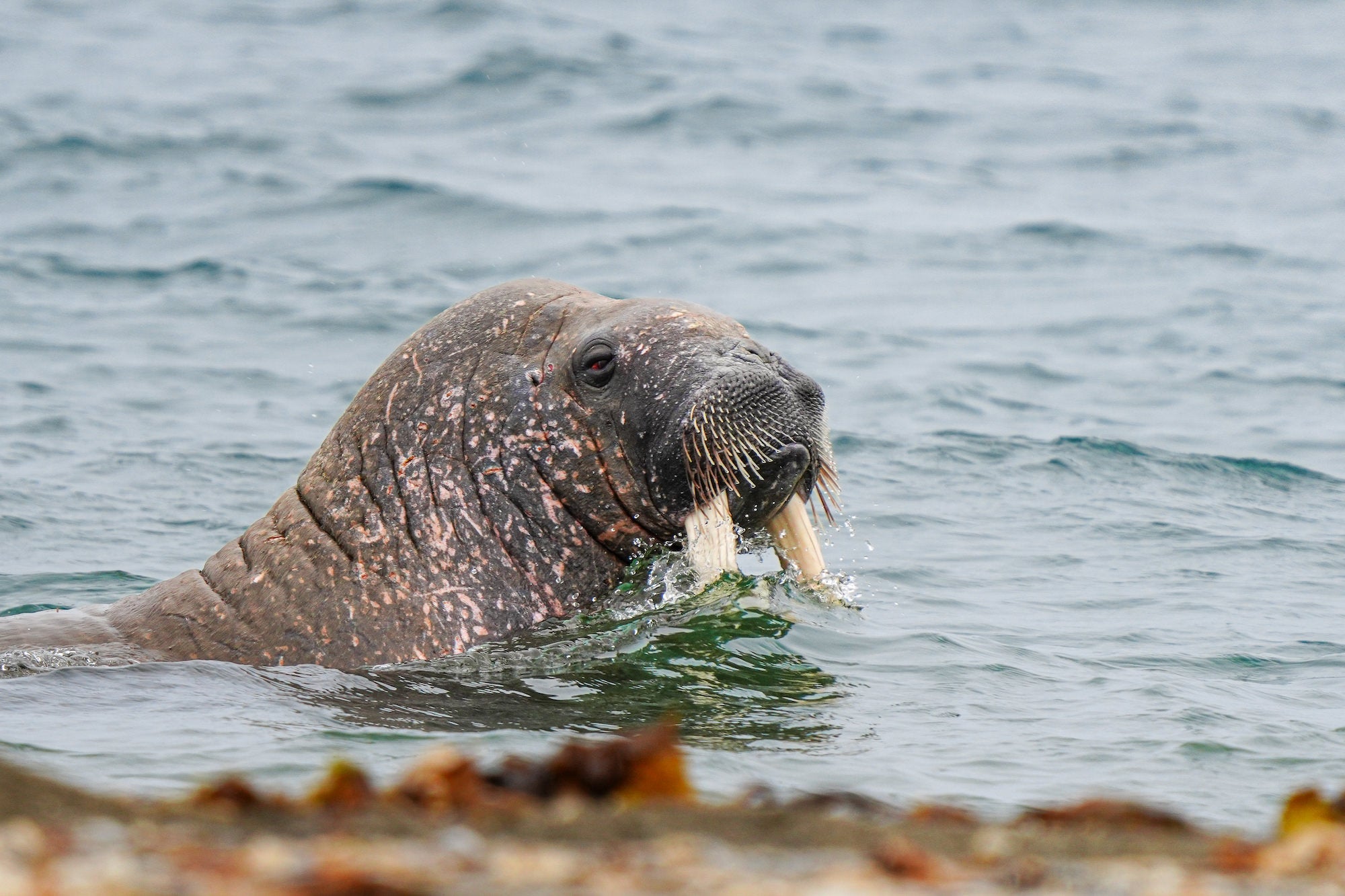
"A walrus swims just off shore." Photo by Allegra Hutton. Sony Alpha 7R V. Sony 200-600mm f/5.6-6.3 G. 1/500-sec., f/6.3, ISO 320
Sony Alpha 7R II: The Sony Alpha 7R II was my first mirrorless camera and is the reason I have become totally obsessed with Sony Alpha. Though she’s an older model, she still helps me capture those crisp high resolution images that Sony cameras are known for. The camera is lightweight/compact and easy to travel with which makes it optimal for a travel/adventure photographer.
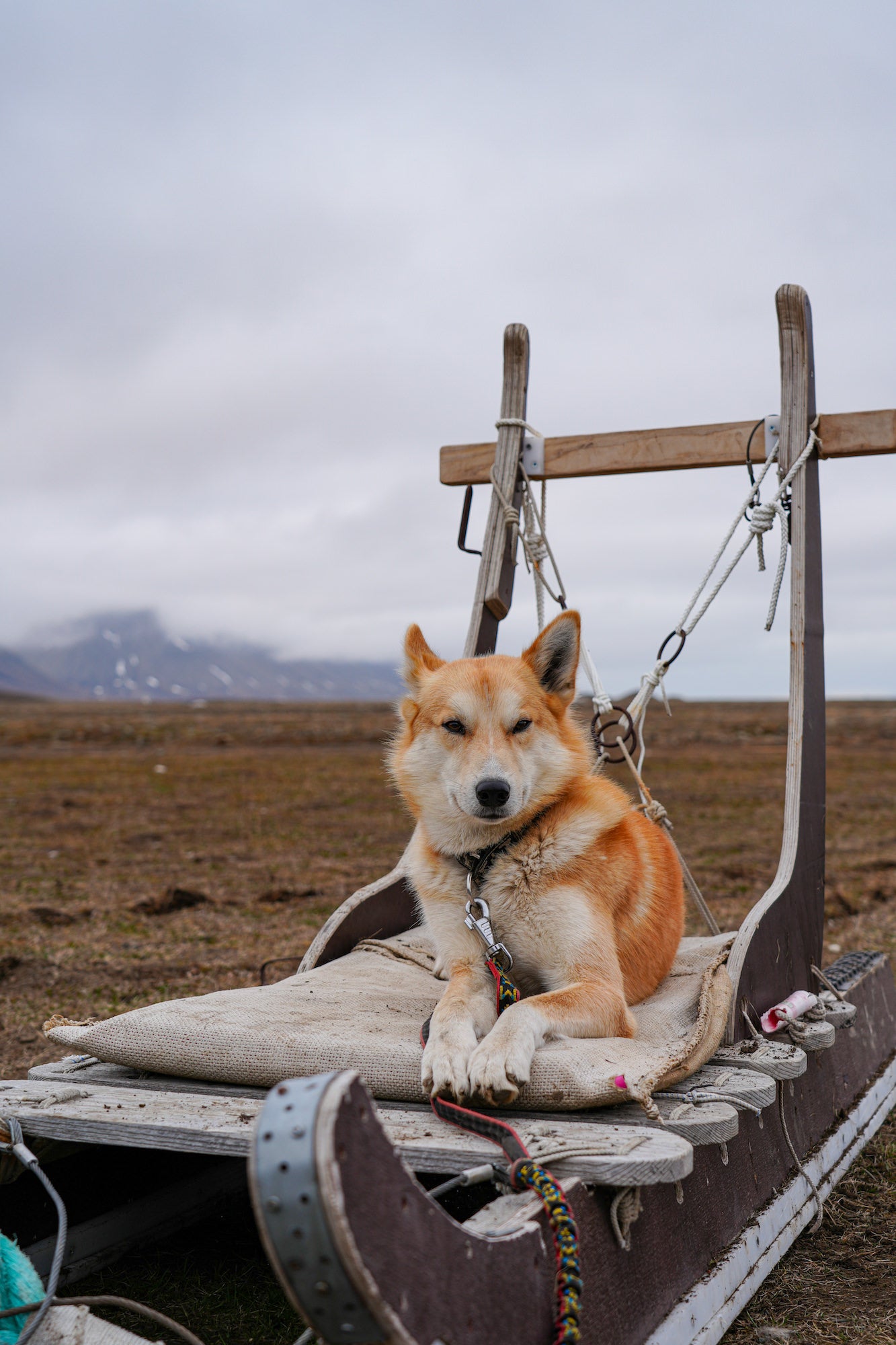
"A sled dog rests on a sled in summer. Sled dogs are a huge part of Svalbard and their culture—while mostly for tourist adventures these days, dog sledding used to be a major form of transportation and was the only real way to travel long distances in snow conditions." Photo by Allegra Hutton. Sony Alpha 7R V. Sony 24-105mm f/4 G. 1/500-sec., f/5, ISO 100
Lenses
Sony 24-105mm f/4 G: When traveling I try to pack as light as possible—and photography gear can get heavy in a hurry. For this reason, I try to keep my pack to two lenses that will give me the widest range of shots. My Sony 24-105mm f/4 G in itself has a pretty wide range and is great for anything from portraits to landscapes.
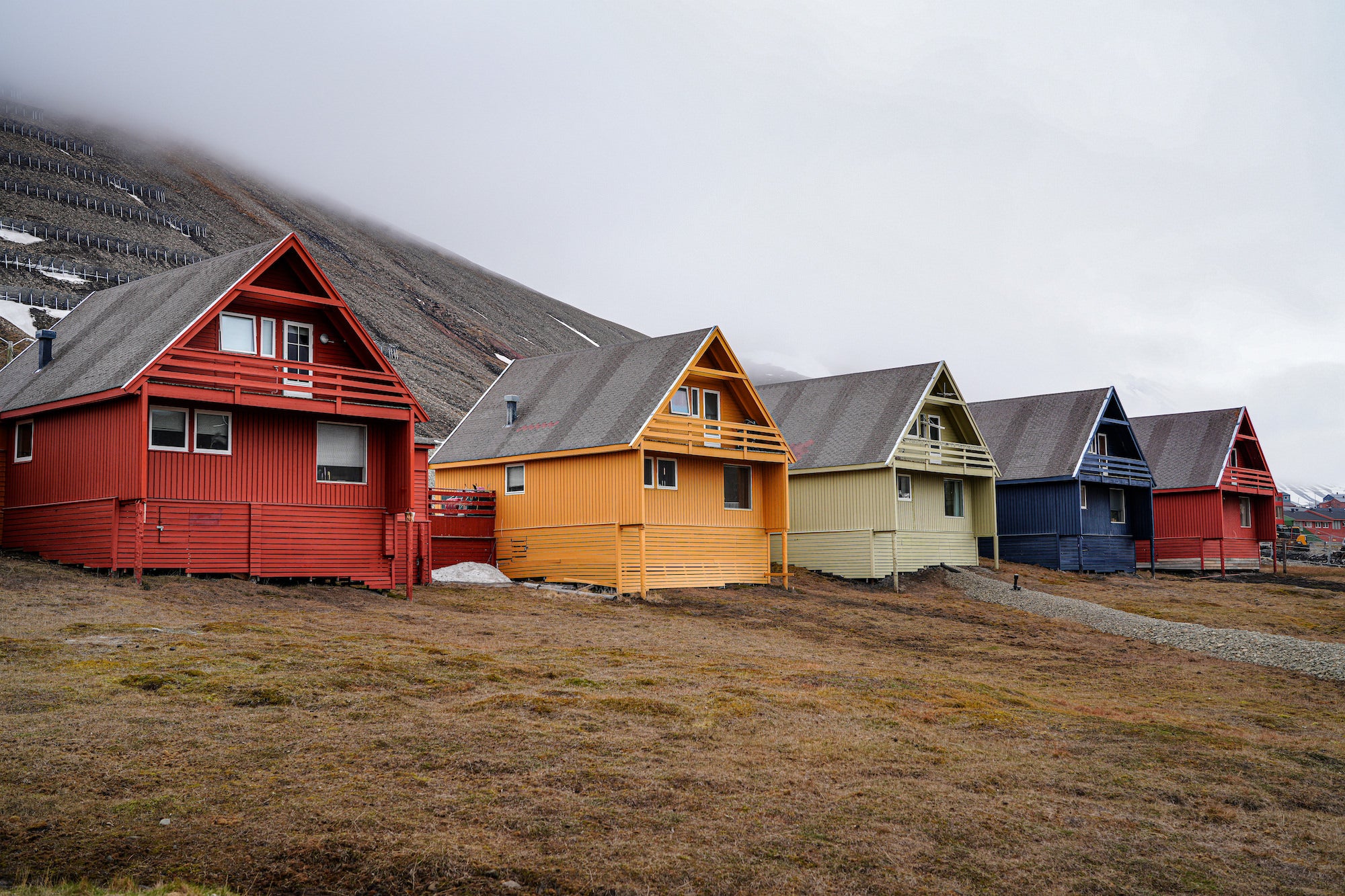
"The colorful houses of Svalbard make for a stark contrast against the otherwise cold and desolate landscape." Photo by Allegra Hutton. Sony Alpha 7R V. Sony 24-105mm f/4 G. 1/320-sec., f/5, ISO 100
Sony 200-600mm f/5.6-6.3 G: I cannot put into words the love I have for this lens—it’s my baby. As a photographer with an affinity for wildlife, this lens is the holy grail. It allows me to get up close and personal with animals while maintaining a safe and respectful distance. In the Arctic specifically, where the wildlife seems to be extra good at hiding/camouflage, this lens is a must. By regulation, we were required to maintain a 200m distance from any polar bears. To the naked eye, that often looked like a small smudge of yellow against the blue white ice—but not with this baby! The Arctic is also full of more birds than I’ve ever seen in my life—I’m talking serious Alfred Hitchcock moments. Generally speaking, these birds tend to be pretty small, so having a nice big lens can help you capture details you might never notice—like the patterns on a puffin’s beak and feathers. All in all, this lens in combination with the Sony Alpha 7R V is my ideal setup and I made sure to always have them ready to capture the shot!
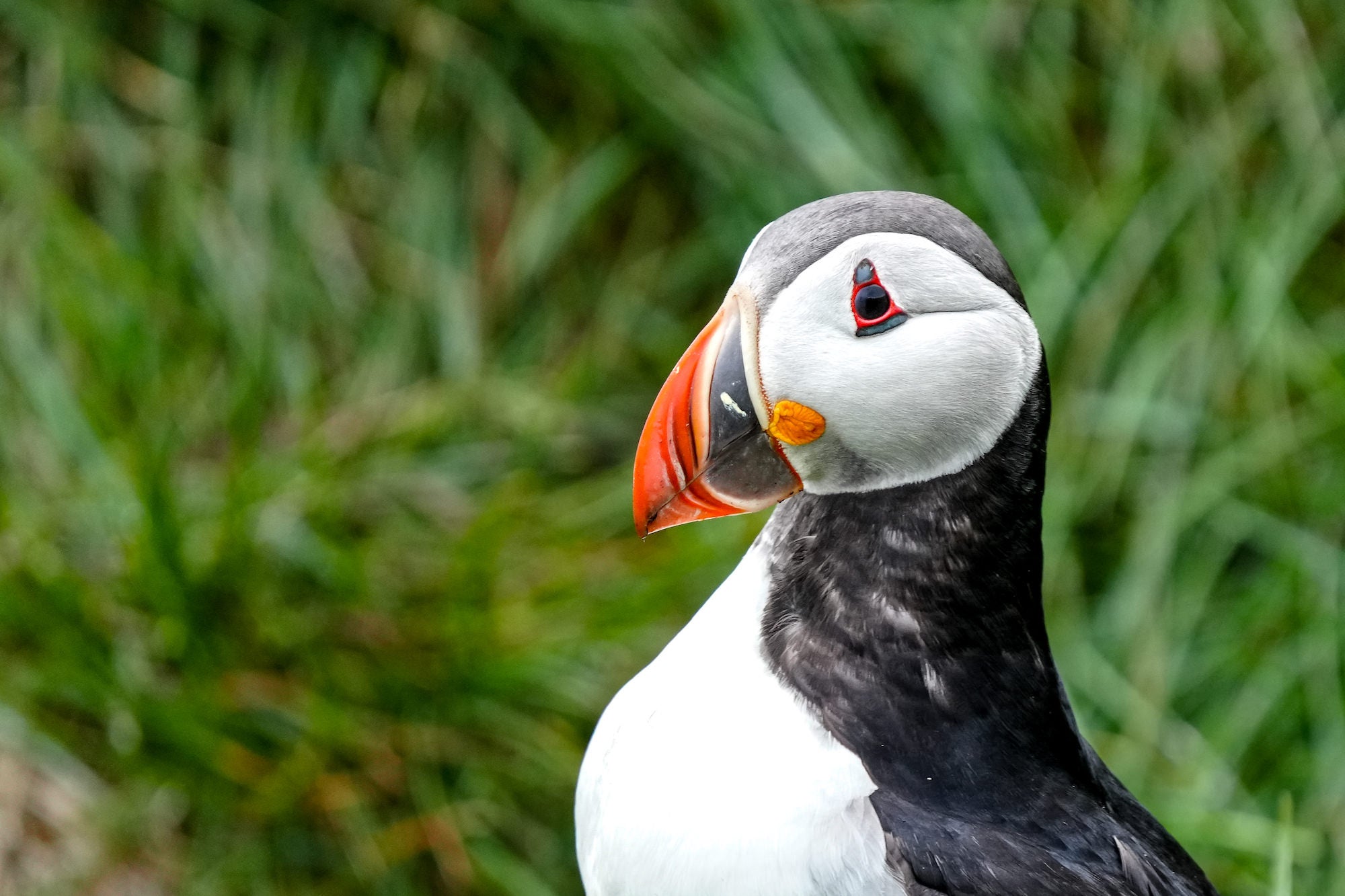
"This puffin popped out of his burrow and paused momentarily before taking flight to dive for more sand eels." Photo by Allegra Hutton. Sony Alpha 7R V. Sony 200-600mm f/5.6-6.3 G. 1/500-sec., f/6.3, ISO 1250
Accessories
Sony 1.4x Teleconverter: I was stoked to be able to use this for the first time on this trip. It really does help bring your subject that much closer when you’re shooting wildlife from a significant difference.
SD Cards: These fill up fast—especially if you shoot in high continuous shooting mode like I do. Our first polar bear sighting, I ended up taking over 3000 pictures—I was grateful to have plenty of back up cards!
Batteries: Back up batteries are a must when shooting in cold locations. Unfortunately, the cold can drain batteries pretty quickly, so it’s good to have several back ups on hand. (Stick the extras in a warm pocket to help longevity!).
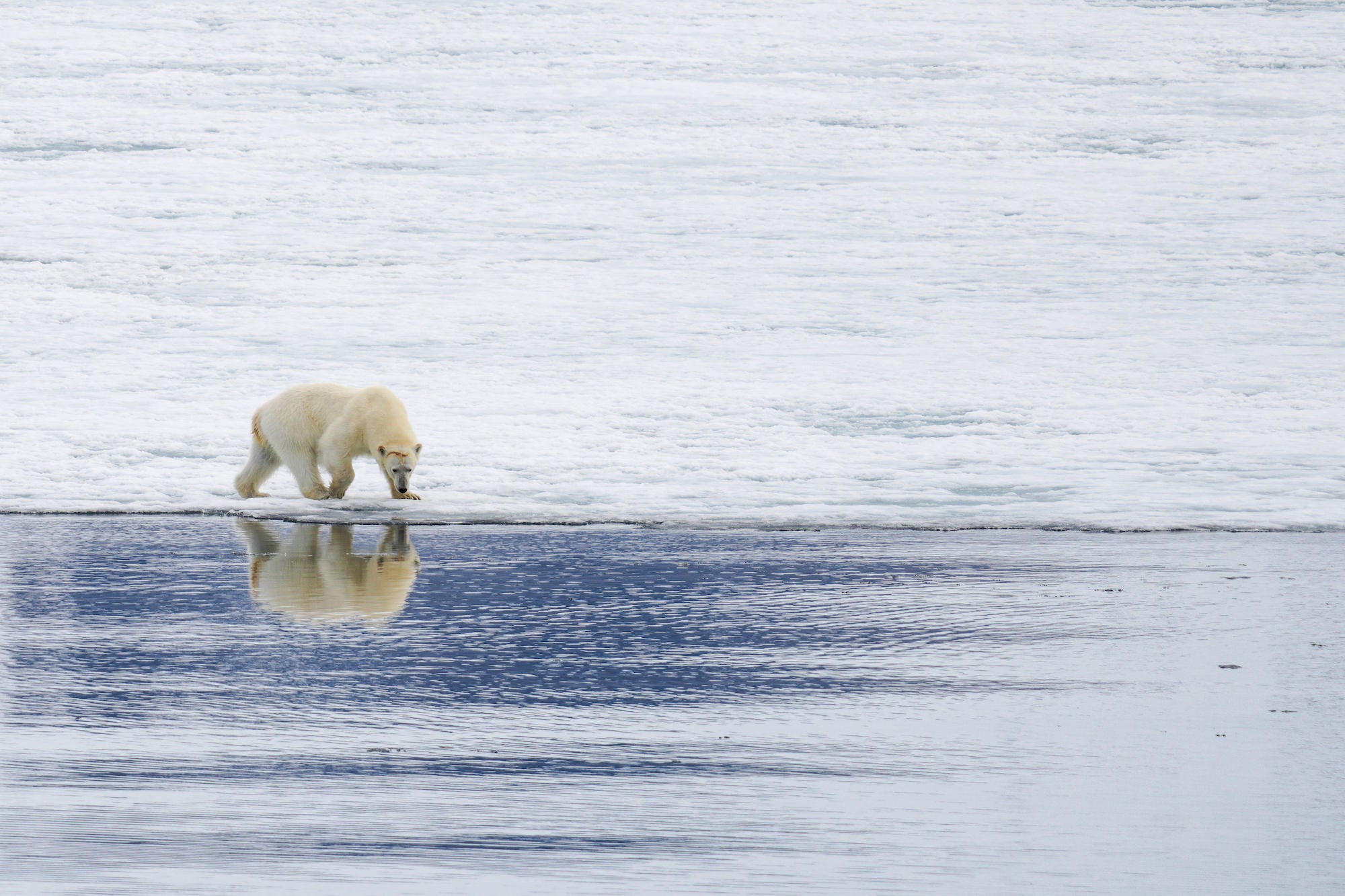
Photo by Allegra Hutton Sony Alpha 7R V. Sony 200-600mm f/5.6-6.3 G. 1/800-sec., f/6.3, ISO 100
Dry Bag: When you’re getting on and off zodiacs and hiking around land in gear that already adds a few pounds (think muck boots and multiple layers of warmth), you want to keep your bag dry and light. There were many times when waves picked up and I was glad my cameras were safely tucked away in a dry bag.
Cleaning Kit: You never know when you’ll find a little dust on your sensor!
Check out more of Allegra’s photographic adventures on Instagram @allegrahutton or on her website allegrahutton.com.





















